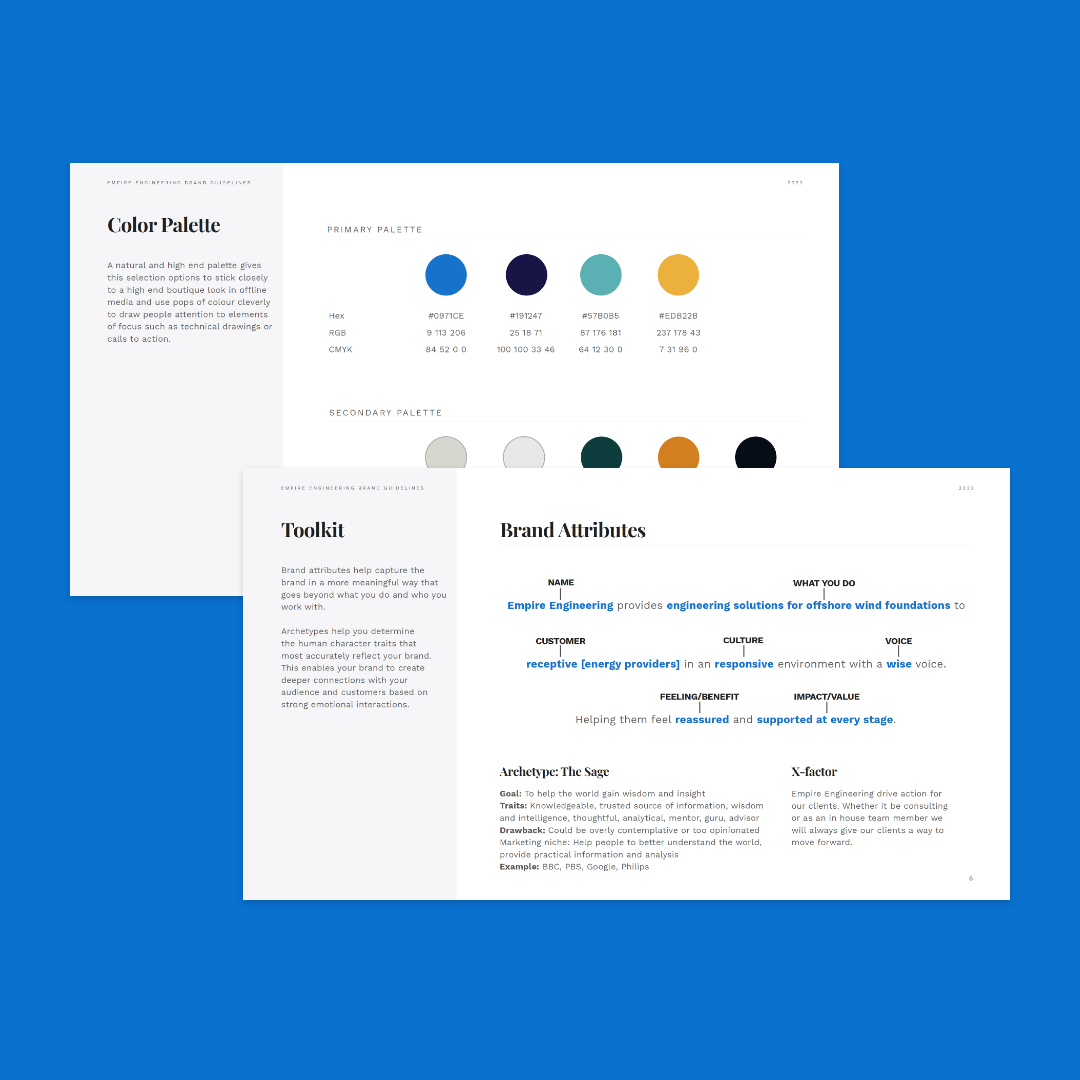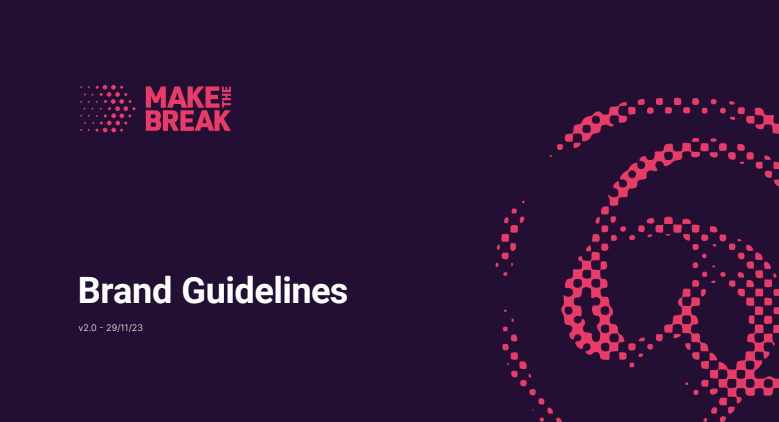
Stu Pringle
Director
The brand book story
“We do our best work when customers have a brand book”
A brand book or brand guidelines or whatever you want to call it… it matters. There are a number of clear benefits from having a brand book. At a simple level, it provides some guidance, it is the north star when working on collateral. But it’s more than that. While the brand book has lofty goals of articulating brand essence, back on the ground it cuts out the faff, de-escalates potential conflict and reduces the opportunity for error.
And that, I hope you’ll agree is all good stuff.
What is a brand book?
There are many descriptions and definitions out there on the web, for me Adobe nails it:
“Brand guidelines are the set of rules that define the overall look and feel of your brand. They help you build a brand identity that your audience can recognize across all platforms.”
For the growing SME, the typical format is PDF and it is publicly hosted on the web for an easy download. Bigger brands can sometimes be tempted to put the brand book behind a portal. Oooh fancy. Don’t do this, it just causes friction in trying to access important information. It’s not like the stuff is going to be ‘stolen.’ Get the brand book out far and wide I say, the more people who have access, the better.
What should go in it?
Well, let’s quote our friends at Adobe again. They say:
“A comprehensive brand style guide outlines everything from your typography and color palette to your tone of voice and mission statement.”
I take more issue with this second definition. Having seen first-hand how difficult it can be in start-up land to nail down the tone of voice or ‘the vision, mission, values’ piece, trying to get all of that down in an approved document could be daunting / tortuous / co-founder fistiecuffs… take your pick.
Instead, this is one of those moments where it’s good to dream big but start small. If you can get as far as agreed brand colour palette (digital and print equivalents), logo, strapline and fonts then that would be a good start.
It’s a heck of a lot better than pulling in a freelancer and saying ‘uh, I duno, just do what’s on our website.’ Because, I am here to tell you that is pain for the person you’ve brought in for the task is most likely to end in a conversation along the lines of ‘oh, that’s not right, that’s not us.’

Here’s one we prepared earlier for Empire Engineering
Brand books could include the following
I say could because it’s a big list:
- Company vision / purpose statement
- High level commercial goals (3, 5, 10 years)
- Brand attributes / archetype
- Brand personality
- Company values
- Buyer personas
- Value proposition
- Key customers
- Tone of voice
- Logo and brand mark
- Logo colours
- Logo minimum sizes
- Logo misuse
- Favicon
- Use of white space
- Colour palette
- Colour theory / palette ratios
- Font headings
- Font body
- Alternative fonts (e.g. for MSFT applications)
- Photography do’s
- Photography don’ts
- Illustration style guide
- Printed material style guide
That’s not even a complete list. Woah. It’s a lot huh?
That’s why I believe this is a start small piece to iterate over time. A one-pager is better than nothing.
Tone of voice guide
I’ve worked around enough professional word people to give this one a special call out. Should tone voice be relegated to page X of a wider brand guidelines? Depends on context, but arguably no. The ideal would be for the TOV to have a larger billing, it’s own documentation, and crucially, for it to be a living document used by the team. But again, baby steps, it’s good to make a start and at least be thinking about such things. As the brand grows in stature, consistency of both appearance and voice become critical.
One wrong move…
And here’s our own. It doesn’t have all the sections.
How to use the brand book
The biggest crime is the work is done and then it becomes a forgotten piece, gathering digital dust in some sharepoint subfolder. Here, I believe the founder should take responsibility. Part of communicating the vision is the consistency of look and feel. The brand book should be in regular use both by team and by freelance support. To help with that, I’ve already made the comment above about it being easily accessible. There’s more to do, sharing it should be part of the briefing process, part of the staff onboarding process, periodic reviews and updates should be baked into the company calendar… all that stuff that is sensible ideas but probably does not happen.
The other thing which really should happen is this. Call things out when not on brand. To avoid conflict, blame it on the brand guidelines! It’s not that the thing is wrong (even if it is), it’s not on brand. Get it fixed. Simples
Are you nodding along while reading this?
Having a brand book is a really good idea
Consider the scenario of briefing in graphic designer for an event stand. This is an important, highly visible end product and has potentially got a decent sized cost attached.
Do you want them using chrome extensions to colour pick your palette from your website and/or guessing fonts and weights for the copy? Do you want them freestyling your strapline? Or do you want them second-guessing the conversion of the brand colours from digital to print?
Of course not. But what can they do if they don’t have the brand book. The brief sent over the wall just isn’t complete.
Rules, they are made to be stretched
Something I have learned is there is a game going on behind the scenes. And while it may be tempting to fight it, instead acknowledge it and accept that it goes on.
Because here’s the thing. What I have learned from working with many different designers over the years is they will treat the rules around the brand a bit like how an F1 team interprets the rules from the FIA. If they can bend them to make things that bit sharper, they will.
That’s the game they are in. Don’t rile against it. Instead to keep things on the right path, use the brand book as your leverage. Without it, designer A takes a liberty this month, designer B stretches it a bit more next month and then by end of year you look back at the marcoms and frankly, it’s a mess. Not cool.
Brand books. Get one.
Stu

Book now to give your business a health check
Our health check will shine a torch around the inside of your sales and marketing set up.
We will identify frictions and highlight what support would help.

